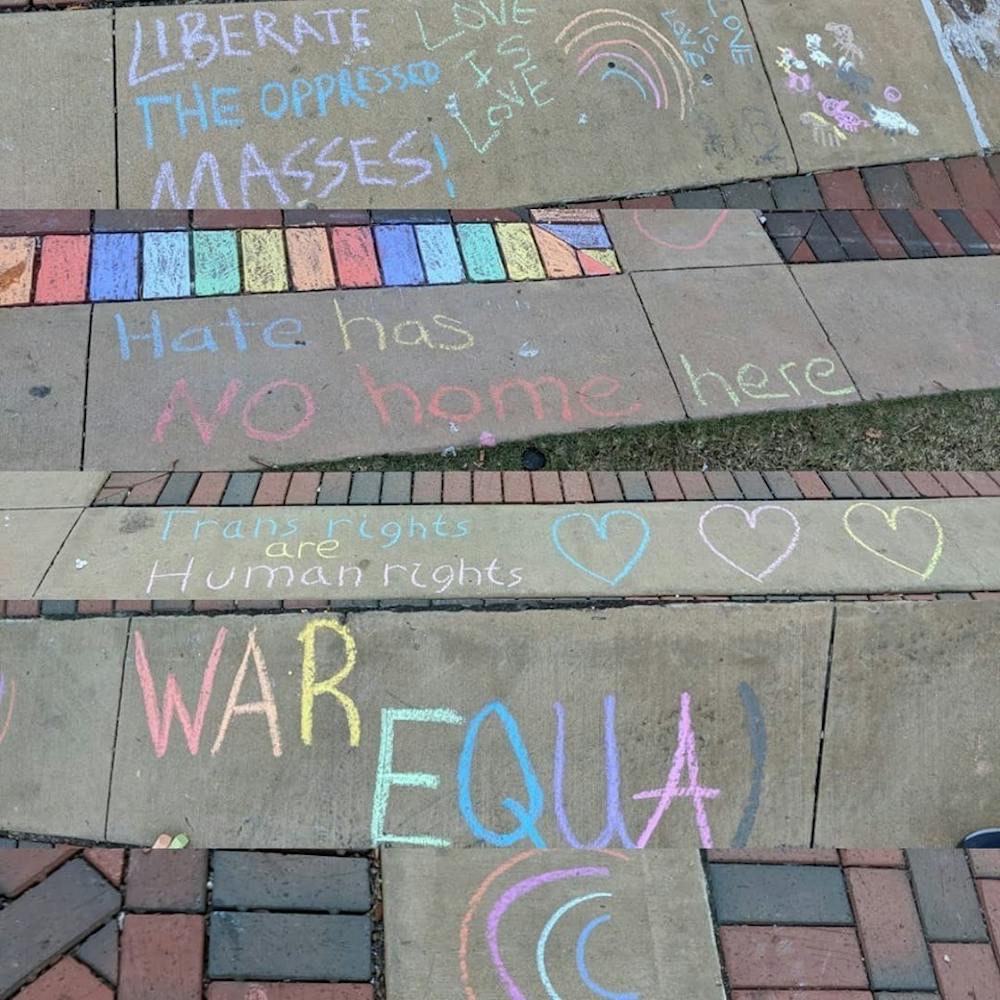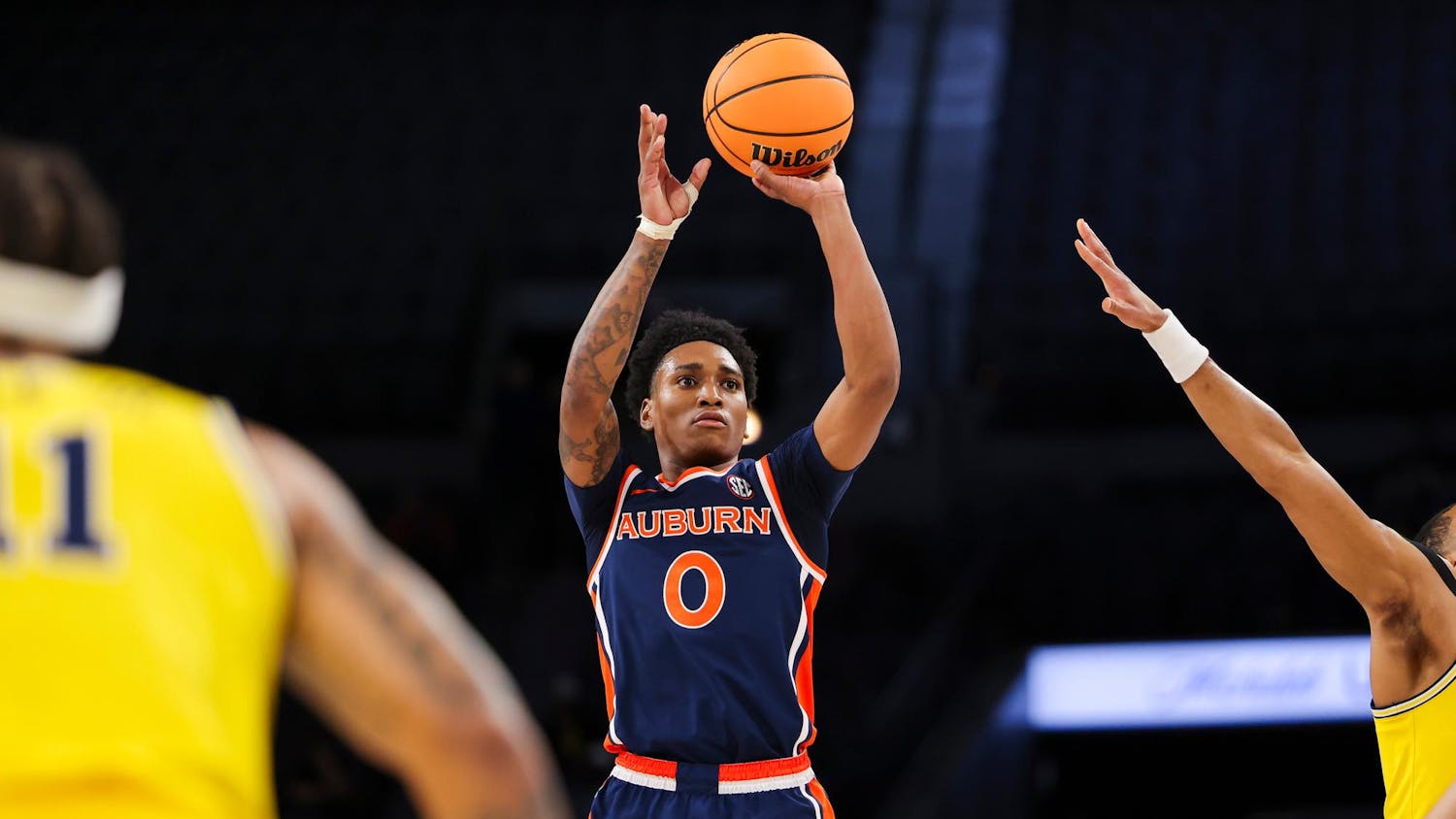As June, Pride Month, comes to a close, Auburn University students have reflected on the University’s commitment to lesbian, gay, bisexual, transgender and queer students, faculty and staff, including their responses to incidents on and around Auburn’s campus some feel are homophobic and the availability of resources for LGBTQ individuals.
Controversial incidents at Auburn
In recent memory, there have been incidents in and around the University that some students feel are homophobic, from professor Bruce Murray’s then-public Facebook posts — in which he said the rainbow is “not a symbol we should cede to the homosexuals” and called a drag queen running for Congress a “gender-confused crossdresser” — to a recent Toomer’s Corner protest opposing gay marriage.
During the protest on Toomer’s Corner, held on April 13, 2021, a group of demonstrators from The American Society for the Defense of Tradition, Family and Property set up on campus with signs saying, “Honk for traditional marriage” and “True marriage is one man and one woman.”
TFP’s website says it is concerned with the “the moral crisis shaking the remnants of Christian civilization,” and a member at the protest said they respect those on the other side of the issue. However, Heather Mann, senior in mechanical engineering and president of Spectrum, Auburn's gay-straight alliance, said these incidents have effects on the feelings of wellbeing of LGBTQ students.
“Several members of Spectrum have been made very uncomfortable and felt threatened by similar demonstrations,” Mann said.
The University never formally addressed the TFP demonstration. However, Jocelyn Vickers, director of OID Education, provided a comment to The Plainsman.
“During this incident, individuals used the public space near our campus to espouse messages that are misaligned with our values as an office and an institution,” Vickers said.
In fall 2019, tenured professor Bruce Murray from the College of Education came under fire for Facebook posts several students and faculty members felt were transphobic and homophobic. In a 2019 article by The Plainsman, Theresa McCormick, associate dean of the College of Education, called the posts “disturbing,” saying, “I would be offended by them.” Following the incident and backlash from students and faculty, Auburn University reviewed Murray’s statements, but his tenure was never evaluated. The University also released a statement about inclusion and diversity.
The affirmation statement outlines steps it would take to create a more inclusive campus which include "developing LGBTQ focused education training, implementing a preferred name and pronoun functionality within the Banner system and expanding LGBTQ student support services."
“Auburn supports the constitutional right and institutional value of free speech," the statement said. "At the same time, we don’t condone speech that is exclusionary or disrespectful to specific individuals or groups as we strive to prepare students for life and leadership in a global economy and multicultural world."
Following the discovery of Murray’s homophobic and transphobic social media posts, the Critical Working Studies Group from the College of Education penned a detailed message asking the University to denounce Murray's messages and take several actions, including faculty attendance of public forums at “benchmark institutions to see how they can be implemented at Auburn.” Although the University is not obligated to meet these requests, Auburn is nevertheless yet to complete several of them.
Some LGBTQ students do not agree with what they feel are neutral responses from the University, especially during discriminatory instances where they feel the University should take a stronger stance.
“Gender identity and sexual orientation are protected classes under Auburn's Title IX regulations, and they should be more actionable about dealing with people who threaten those protected classes,” Mann said.
Will Humphreys, junior in apparel design, said he believes the University could take a more supportive stance for its marginalized communities.
“If anything, Auburn could be more outspoken towards its support for queer students on campus with the hope that speaking out and being more vocal will increase normalcy of LGBTQ lives,” Humphreys said.
Tracking progress
Almost two years after Auburn issued its statement affirming inclusion and diversity, LGBTQ groups across campus are evaluating the University’s actions, and they believe progress is less than satisfactory.
However, the University has done most of what it said it would do in the 2019 statement. Since issuing the statement, the University has modified Banner to allow students to change their preferred name and pronouns and has also introduced Safe Zone, a training course implemented by the University to educate faculty, staff and students on sexual orientation and gender identity. But Mann and others said these actions are not enough.
“The University does not have nearly enough resources for LGBTQ students, and what they do have — while moving in the right direction — is still lackluster,” Mann said.
OID collaborated on the Campus Pride Index Initiative, a national benchmarking tool that rates college campuses based on how safe and accepting they are for LGBTQ students. Auburn's current pride index rating is a 2.5 out of 5, which is the same as the University of Alabama and UAB but falls short in comparison to the over 400 academic institutions on the index, 80% of which scored higher than Auburn. Vickers said the University is trying to improve that rating.
“The incredible benefit of the Campus Pride Index is that it helps Auburn have internal and external assessment of the inclusive environment being created for our LGBTQ students,” Vickers said. “Our current campus pride index rating is comparable to other schools in the state, but we certainly want to be better.”
One issue Mann has with University operation is that Safe Zone training is not a requirement and that many students and staff don’t choose to participate in it. Mann said she believes residents assistants should be required to undergo Safe Zone training and that RAs' lack of participation has caused issues within residence halls.
“Very few [RAs] actually know how to handle complaints or issues that arise from homophobic or transphobic roommate arrangements,” Mann said.
Mann said she would like to see the following resources on campus:
· Gender-inclusive housing
· Safe places on campus specifically for LGBTQ students to hang out, chill or study
· Quick and effective ways of dealing with reports of prejudice
· Easily accessible medical care for gender transitioning
· Inclusive Greek life options
Finn Bellamy, senior in software engineering and president of oSTEM, a campus organization for LGBTQ students who study science, technology, engineering or mathematics at Auburn, echoed Mann’s beliefs but pointed out a roadblock to getting those resources.
“I personally feel that there could be more diversity in those resources,” Bellamy said. “But because our LGBTQ student population is small, there wouldn’t be enough people to support them.”
Aside from changes she’d like to see from the University, Mann said she believes the general ideology among students and staff needs to change in order to create a more inclusive campus.
“I can say with certainty that most students who embrace their sexual orientation or gender identity on campus end up being treated with more contempt than those who do not express anything openly,” Mann said.
Humphreys said this is especially true in the South.
“I am aware that, as a student in an SEC university in the Deep South, there are going to be a variety of opinions, lifestyles and world beliefs that do not condone my existence,” Humphreys said.
Humphreys said that while he does feel accepted here at Auburn, he has encountered homophobic occurrences on campus as a gay man, the most notable of which involved someone calling him an anti-gay slur driving by him.
Bellamy said she believes that most homophobia comes from a place of ignorance and skewed beliefs on a subject she thinks the individual is not educated on.
“That judgment tends to come from people who have not had to step outside of the homogenous and intolerant bubbles they grew up in,” Bellamy said.
Mann said a shift in perception through education looks like a solution to the larger issue of homophobia. An extensive and strict regimen will help spark the flame to change this perception, Mann said.
“As much as I hate to be a pessimist, the only way to really make LGBTQ+ students as a whole more comfortable would be to completely change Auburn’s perception of the community,” she said.
Moving forward
The Office of Inclusion and Diversity is working with students, faculty and staff on preparing a report on data collected from a focus group, according Vickers. The University also mandates a diversity statement in all syllabuses and provides a diversity course which is optional, which Bellamy said would be more beneficial if made mandatory.
“People are always looking for GPA boosters, so a mandatory course would be a great help,” Bellamy said.
The Critical Working Studies Group led the initiative to include pronoun preferences in Banner in 2018. Since then, the group has continued to work toward advocacy efforts and provide training to students and staff on gender identity and pronouns.
Vickers said the University will also expand education modules to include information on providing a safe and inclusive campus. OID is working on improving their resources, but Mann remains skeptical of Auburn’s progress.
“I do not think I will see a welcoming and inclusive Auburn University within the next few years at least," Mann said.
For students who experience instances of homophobia, they can report it to the Office of Equal Employment Opportunity or to the Bias Education Response Team. EEO was created under Title IX and provides services to protected classes in compliance with federal and state laws. BERT is a group of staff and faculty to which students can report incidents of bias and get connected with support resources.
“BERT is in place to support individuals who are impacted by forms of potential bias," Vickers said. "If students are experiencing harassment, bullying or targeted verbal or physical attacks, campus safety is also available to support."
Do you like this story? The Plainsman doesn't accept money from tuition or student fees, and we don't charge a subscription fee. But you can donate to support The Plainsman.





